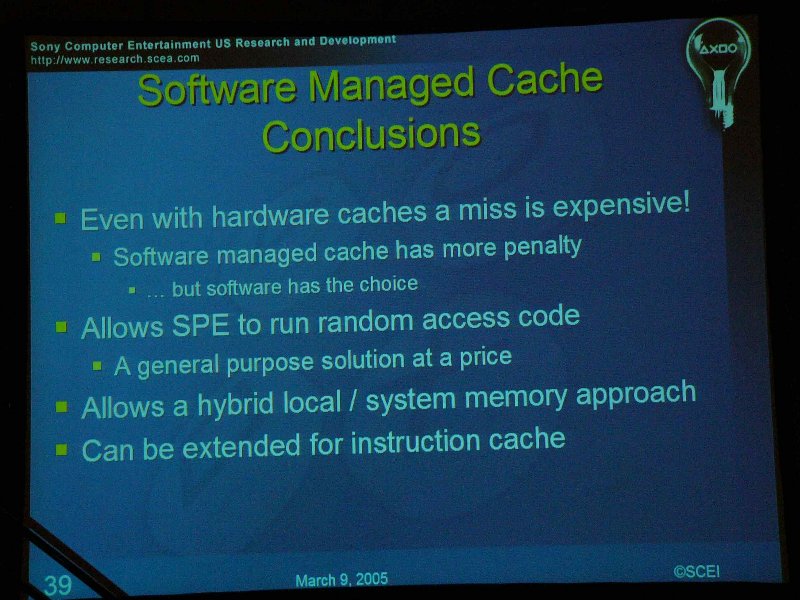Titanio said:one said:IBM has digests of 4 Cell technical papers for the ISSCC 2005. Search ''cell processor" from here.
Thanks. There's also an article there I hadn't seen before (if you search for Cell, it's called "Cell moves into the limelight", it was from mpronline.com).
The article seems to have been written with insight from IBM. A quote from it:
"In designing the BPA, IBM looked at different workloads in areas
of cryptography, graphics transform and lighting, physics,
fast-Fourier transforms, matrix math, and other more scientific
workloads."
So..vertex processing, right? Yeah yeah, I know, nothing's certain...just vertex processing on Cell with pixel processing on the GPU is a favoured PS3 configuration for me
Do we know enough now to work out the theoretical peak vertex performance per sec of one SPE @ 4Ghz? What transformation is used when calculating such peaks?
Looking at the SPEs' local memory, they could each hold ~16,000 vertices at a time...right (?) You can fetch a vertex every 8 cycles? Sorry, this isn't my forte, but I'd like to learn
edit - doh, mixing up bits and bytes
cell can doing 4 gigapoly/sec
but max polygon count is unimportant, because this is 2 poly with nvidia's tech:


